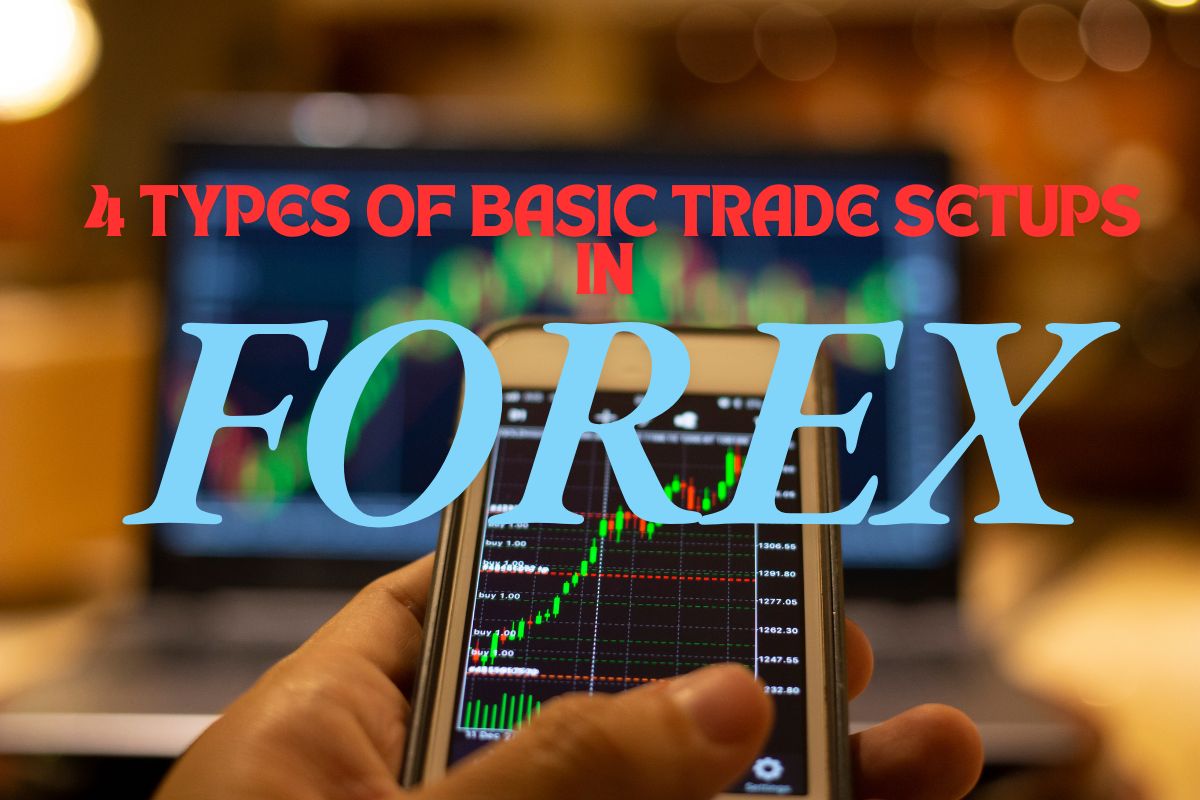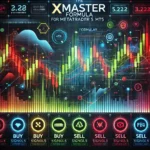The pace with which the forex market moves can always excite a trader. The market offers opportunities with high volatility and liquidity. To be successful in a forex trade, a trader must understand the pattern with which the market behaves. However, there are many determinants in the market, and it may sometimes be challenging to work with a clear plan. Moving on to this blog topic, we will discuss 4 types of basic trade setups in forex. The trade setup isn’t just a mere strategy but a guide that can help traders work on chances to make profitable trades.
The four basic trade setups in a forex market are:
- Breakout
- Reversal
- Trend Continuation
- Range-Bound
They depict market conditions and can help traders trade according to the market. All these setups come with a set of tools and rules. They can help break the market’s unpredictability by generating sense out of the movements and fluctuations.
Learning these setups is necessary for any traders who want to make a living out of the market and are likely to stand long. With these setups, traders are provided with a clear guide to making a profit. Once you have an understanding of these setups, it doesn’t matter how the market behaves. You can always generate some positive results from it.

What is a Trading Setup in Forex?
In forex trading, a trader uses different tools to access the market conditions to make a profitable trade. Here, a trading setup is specific market conditions analyzed by a trader using several indicators and other tools. Traders do the analysis before the execution of a trade. Traders want to ensure that they can enter a trade and make an exit at the perfect time.
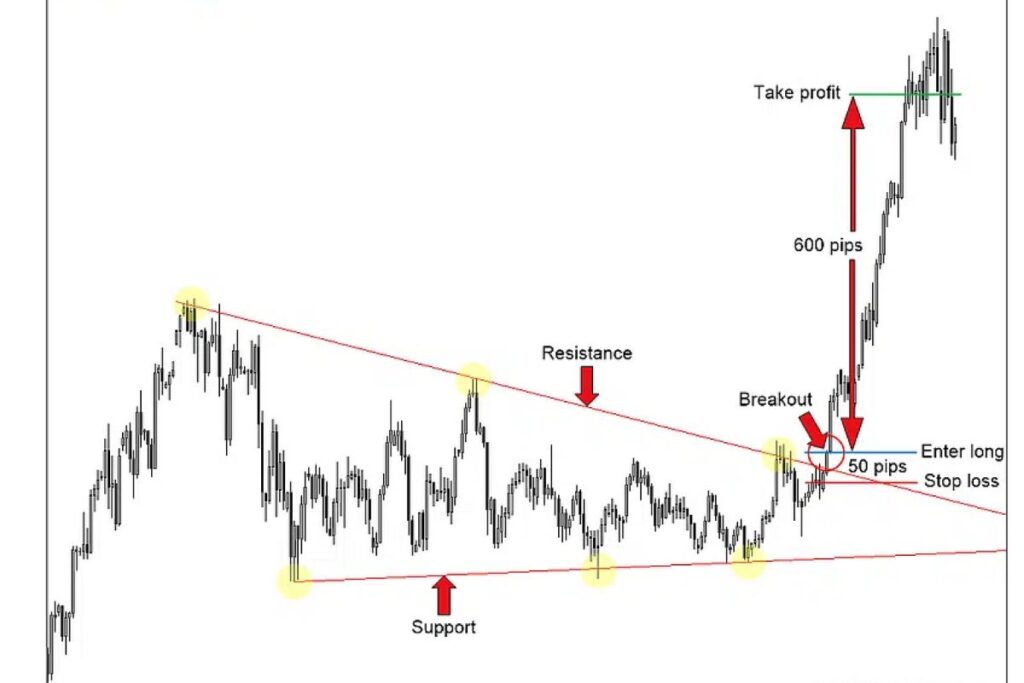
This will enhance the profitability of the trade. Trade setup acts as a framework for making good trading decisions. It will help traders identify opportunities and do risk management. Let us see some components of the forex trade setup.
1. Market Analysis
- A trader will do the technical analysis by using different tools. Using different charts, indicators, and patterns is necessary to understand the price movement. For example, trend lines, support, and resistance levels.
- A trader can do a fundamental analysis by monitoring many market conditions. These are economic data, geopolitical events, and central bank decisions. All these events can cause fluctuations in the market and can affect currency values.
- Social sentiments and various international economic factors influence the forex market. Traders use tools like the COT to understand the sentiments of the market.
COT: Commitment of Traders
2. Currency Pairs
- It can be an important step in trade setup in forex by deciding the currency pairs to trade. Traders can choose from pairs like EUR/USD or USD/JPY as they are volatile and can generate more opportunities.
- Before choosing a currency pair, traders must consider the volatility, trading sessions, and correlation with other markets.
3. Entry Conditions
A trader finds entering conditions for a trade based on.
- Indicators such as MACD, RSI, and MAs can predict an entry signal to trade.
- Market levels are necessary to identify before entering a trade. Fibonacci retracement levels, support and resistance zones, or pivot points can help.
- Engulfing candle patterns, pin bars, or breakouts can trigger trade entry conditions.
4. Exit Conditions
To ensure that the exit of a trade is safe with minimum loss and maximum profit.
Stop-loss is a risk management strategy where a trader can exit the trade, limiting the loss. For example, placing it below a recent swing in the case of a long trade.
Take-profit is a risk management tool in which traders set a predetermined target and book profits at certain levels.
Trailing Stops: This is the dynamic way to adjust the stop-loss levels. Traders use it when the trade starts to move in the trader’s favor.
5. Trading Timeframe
Scalping: For short-term trading, traders use 1–5 minute charts.
Intraday Trading: For trades that last for more than an hour, traders use 15-minute or 1-hour charts.
Swing Trade: Traders use 4-hour or daily charts.
6. Risk Management
- Traders determine the position size by factors like risk tolerance. It also depends on the size of the account. For example, per trade, traders can take a risk of 1-2% of the traded capital.
- Ensure a good risk-to-reward ratio. For example, 50 pips is risked for a 100 pips gain, which is a 1:2 ratio.
7. Tools
Traders can use many indicators and tools to confirm a trade setup.
- Momentum-conforming breakouts or trend reversals.
- Candlestick patterns should align with trend indicators. This condition will make a trader sure of their next move.
8. Economic Calendar
For a perfect trade setup, traders must follow major economic events and global news.
4 Types of Basic Trade Setups in Forex
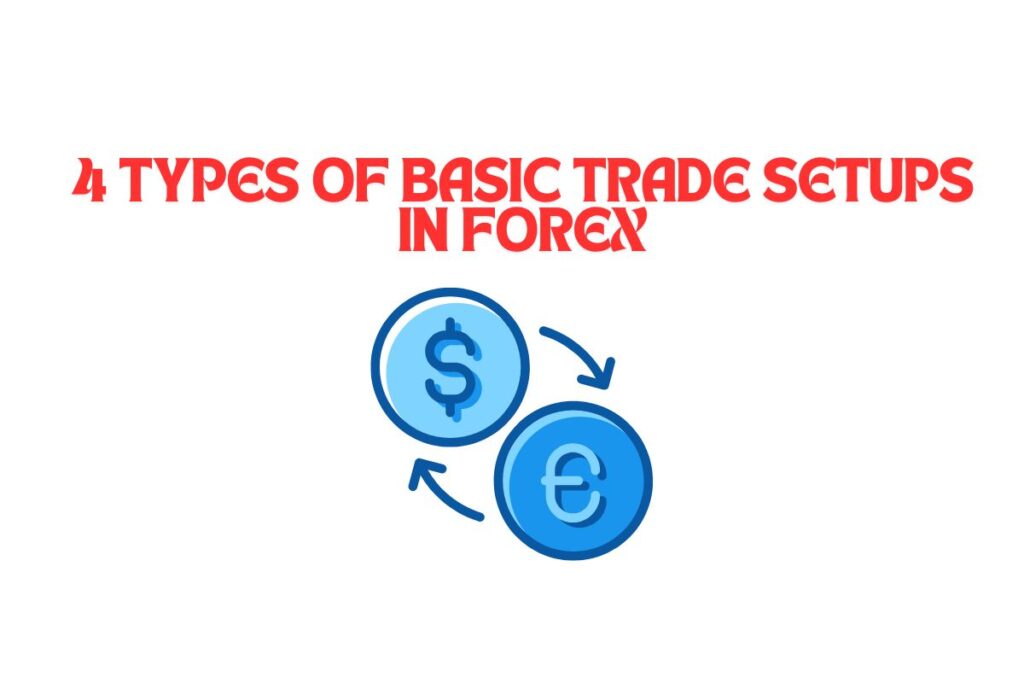
A trade setup is a plan used by traders to better understand the forex market and decide how to trade. It includes fundamental and technical analysis along with a set strategy to guide them. Let’s take a look at the types of basic trade setups used in forex.
1. Breakout Setup
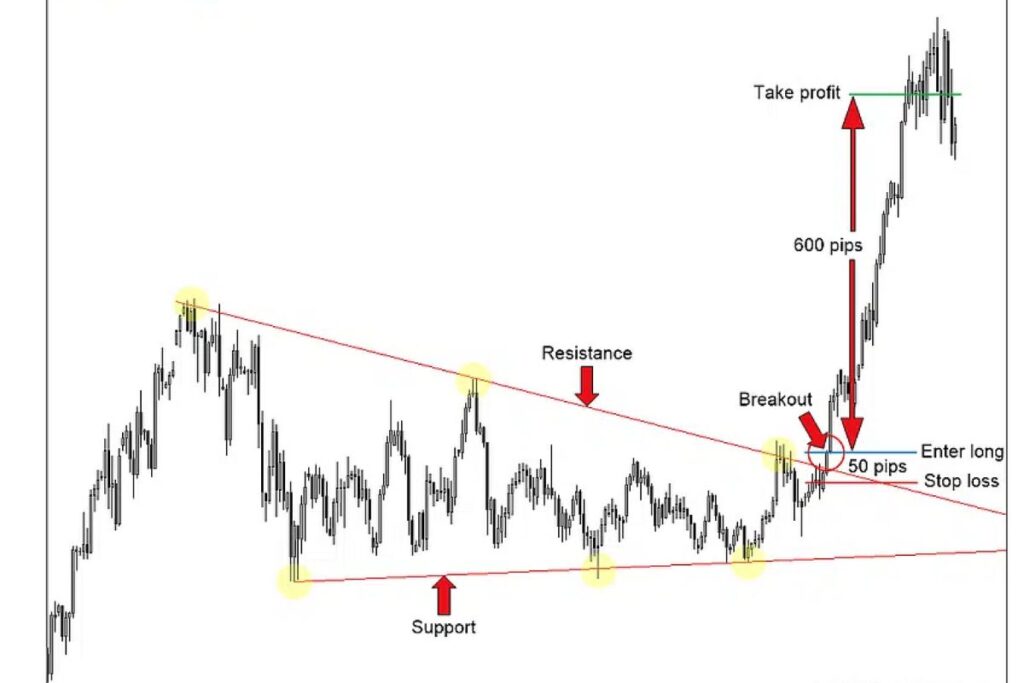
In a breakout setup, traders aim to capitalize on price movements when a currency pair breaks out. It means the currency pair has moved out of a defined price range. It indicates the beginning of a new trend or continuation of an existing trade. Let’s take a look at some key elements of a breakout setup.
| Key Element | Explanation |
| Market Condition | The price must be forming patterns such as a triangle, rectangle, flag, or wedge.The price of the currency moves within a narrow zone without making any upward or downward movements.Before a breakout, the volatility is low. |
| Entry Signal | Buy Breakout: Enter the trade as the price breaks above a key resistance level.Sell Breakout: Enter the trade as the price breaks below a key support level. |
| Volume | Increased volume during a breakout is a good sign, and it adds genuineness to the move. Check with your broker if they provide volume data. |
| Indicators Output for Support | Traders can use Moving Averages to identify the overall trend.If the price breaks out of bands, a Bollinger Band signals a breakout.RSI/MACD can confirm the momentum and reduce the chances of false breakouts. |
| Take Profit Target | Traders can use Fibonacci extensions or key support/resistance levels for defining take-profit targets. |
| Stop-loss Placement | Short Trades: Place the stop-loss above the breakout point or recent swing high.Long Trades: Place the stop-loss below the breakout point or recent swing low. |
2. Reversal Setup
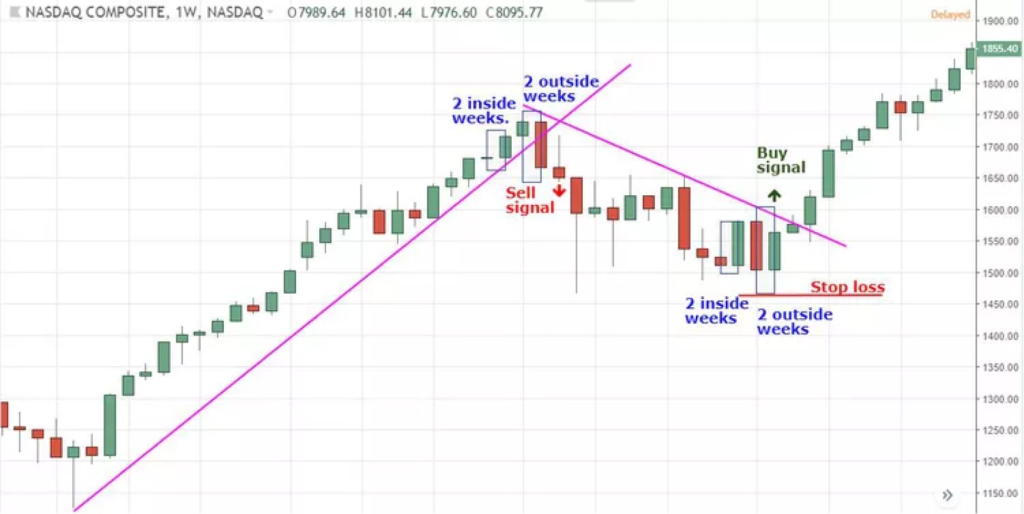
The reversal setup is part of a trading strategy. In this, the trader looks for triggers when the current trend is losing momentum and might change direction. The aim is to identify the end of the current trend and capitalise on the new trend. Let’s take a look at some key elements of a reversal setup.
| Key Element | Explanation |
| Market Condition | The existing trend must show signs of weakening. It can be either an uptrend or a downtrend.The market price approaches the support/resistance levels, pivot points, or Fibonacci retracements. |
| Reversal Signal | Bullish Reversal: Candlestick patterns like a Morning Star, Hammer, or Bullish Engulfing. Bearish Reversal: Candlestick patterns like a Shooting Star or Bearish Engulfing. Bullish Divergence: Indicators are making higher lows, and prices are making lower lows. Bearish Divergence: Indicators are making lower highs, and prices are making higher highs. A trendline break represents a potential trend reversal. |
| Confirmation Indicators | Moving Averages: Shorter MA crosses below/above longer MA. For example, 50 EMA crossing above/below 200 EMA. RSI: Overbought level, which is above 70, or oversold level, which is below 30, combined with divergence. |
| Entry Point | Enter a trade if the reversal signal is confirmed by price action or indicators. Long trade: Look for a reversal near the key support level.Short Trade: Look for a reversal near the key resistance level. |
| Take Profit Target | First Target: Next major support/resistance level.Second Target: Based on previous trends or Fibonacci extensions. |
| Stop-loss Placement | Short Trades: Place the stop-loss above the recent high or resistance level.Long Trades: Place the stop-loss below the recent low or support level. |
3. Trend Continuation Setup
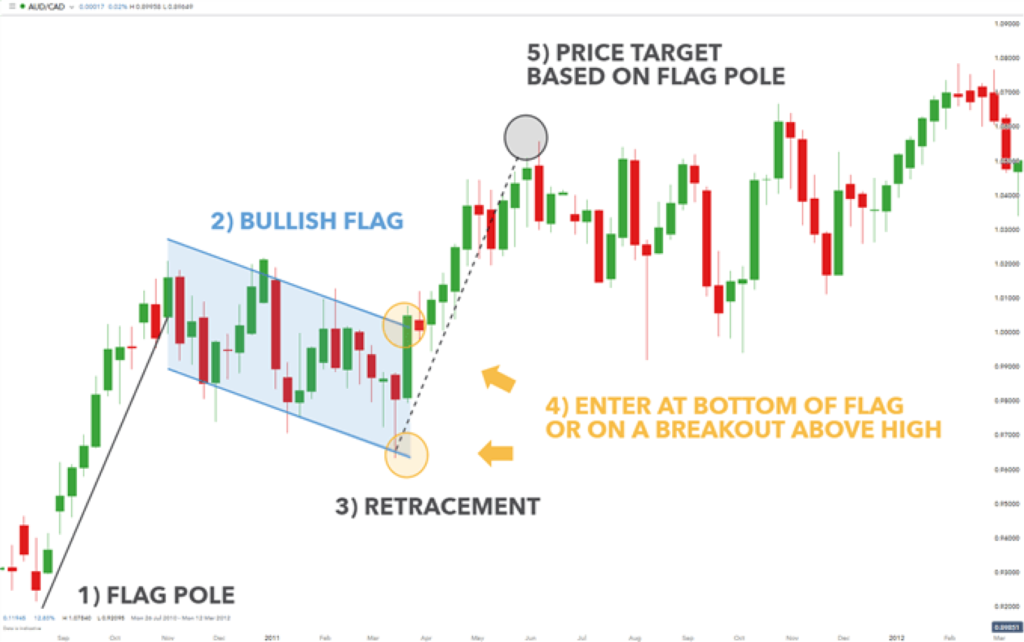
A trend continuation setup in forex means the ongoing market trend will stay. Traders like to capitalize on this situation by making an entry in the trend direction, often after a small pause or retracement. Let’s break it down:
A. Pullbacks and Retracements
- The price will move against the trend for a short period before resuming the original direction.
- Confirm the trend with candlestick patterns. A hammer candle is used in the case of a bullish trend, or a shooting star is used for a bearish trend.
Finding entry point: Use Fibonacci retracement levels (38.2%, 50%..).
B. Flags and Pennants Patterns
These patterns form during the consolidation phase. The trend should be strong in this phase.
To trade: Enter a trade when the price breaks out of the pattern in the direction of the prevailing trend.
Flags: Rectangular patterns that are small and sloping against the trend.
Pennants: Triangle patterns that are small and symmetrical.
C. Breakouts from Consolidation Zones
Price will break from a range or sideways movement to continue the trend.
To trade: A trader can use indicators like Bollinger Bands or ATR to confirm volatility expansion.
Enter on a breakout with a confirmation of strong momentum or increased volume.
ATR: Average True Range.
D. MA Crossovers and Dynamic Support
MAs like 20-EMA or 50-EMA can act as dynamic support/resistance in trending markets.
EMA: Exponential Moving Average.
To trade: Enter the market when the price bounces off an MA in a trend.
E. Risk Management Tips
- During an uptrend, place a stop-loss order below the recent swing low.
- During a downtrend, place a stop-loss order above the recent swing high.
- Avoid overleveraging.
- Use proper risk-to-reward ratios. It can be in ratios of 1:2 or better.
4. Range-Bound Setup
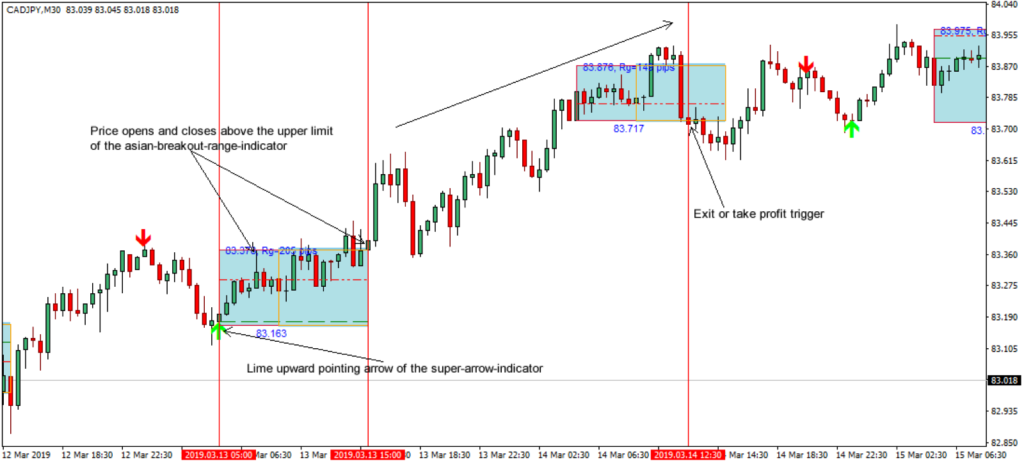
It is a condition where the market fluctuates between a defined support and resistance level.
This condition may occur when neither buyers nor sellers have sufficient momentum to break the range. In this condition, the market trend is not strong.
| Key Element | Explanation |
| Characteristics | The market moves between resistance and support levels. It forms a horizontal or nearly horizontal pattern.The market is less volatile in a range-bound setup. |
| Trade in Range-Bound Setup | Traders can use technical indicators like Bollinger Bands, stochastic oscillators, and RSI to confirm the range. While using RSI, look for oversold conditions near support and overbought conditions near resistance. Pay attention to repeated bounces from a support or resistance level. Enter the buy position Near the support level. Enter sell position: Near resistance level. Stop-loss for buy: Below support. Stop-loss for sell: Above resistance. |
| The transition from Range to Trend | Be aware of a false breakout. In this case, prices may move beyond the support or resistance for a brief period before reversing back. In a range-bound market, traders experience limited profit margins compared to a trending market. Range-bound conditions are time-consuming and require constant monitoring for reversals near boundaries. |
Conclusion
In this blog, we discussed about four types of basic trade setups in Forex. These setups are trend continuation, breakout, reversal and range-bound. Mastering all of these can help a trader trade efficiently in the forex market. A trader has to understand all the market dynamics before applying these setups. The success of a trade depends on combining technical analysis, fundamental analysis, risk management and discipline.

